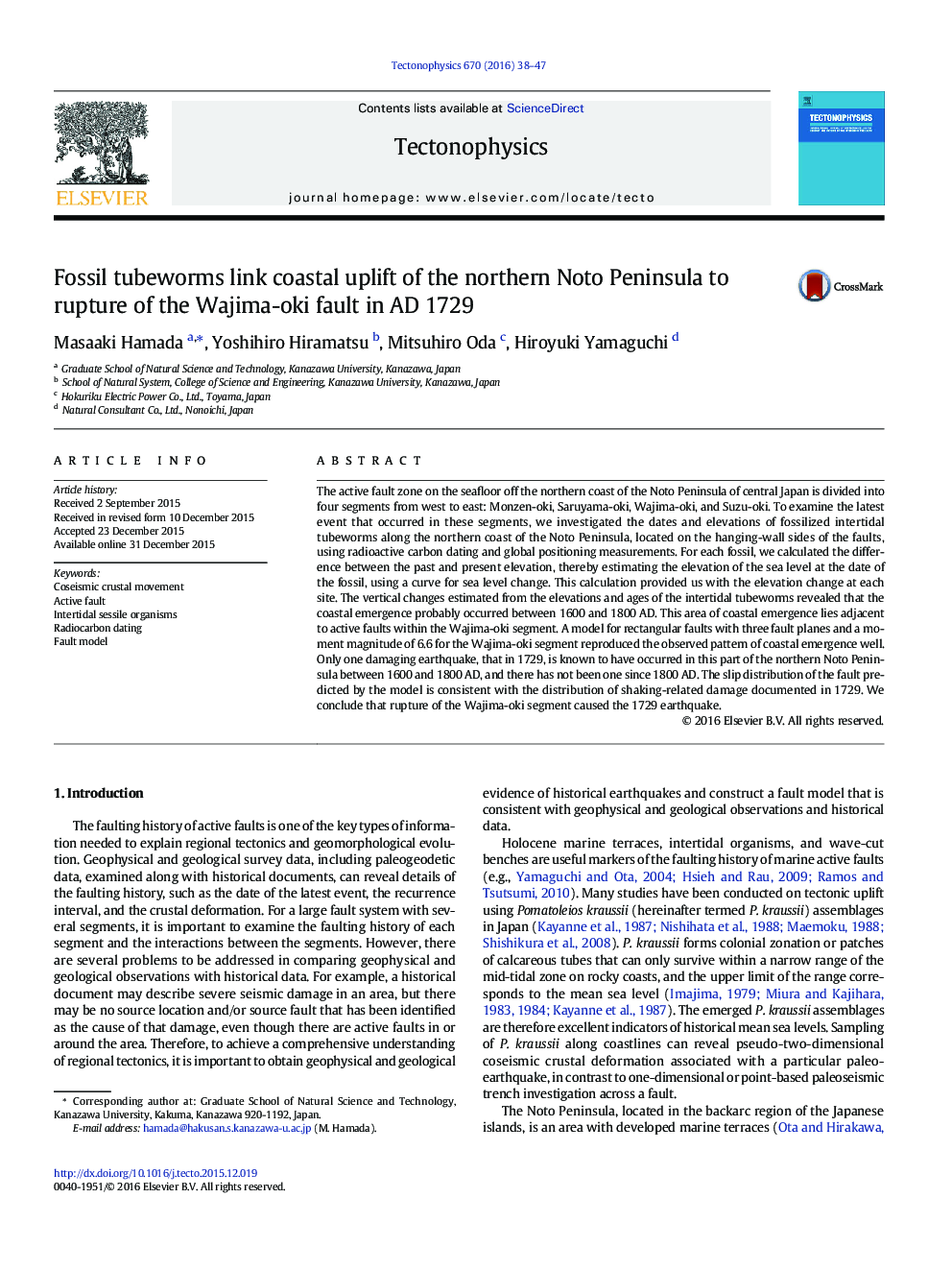| کد مقاله | کد نشریه | سال انتشار | مقاله انگلیسی | نسخه تمام متن |
|---|---|---|---|---|
| 4691371 | 1636726 | 2016 | 10 صفحه PDF | دانلود رایگان |
• Carbon dating of sessile organisms indicates uplift time of coastal area of Japan.
• Marine fault activity in 18th century connected to coastal uplift of peninsula.
• Uplift estimates from fault model are consistent with earthquake damage records.
The active fault zone on the seafloor off the northern coast of the Noto Peninsula of central Japan is divided into four segments from west to east: Monzen-oki, Saruyama-oki, Wajima-oki, and Suzu-oki. To examine the latest event that occurred in these segments, we investigated the dates and elevations of fossilized intertidal tubeworms along the northern coast of the Noto Peninsula, located on the hanging-wall sides of the faults, using radioactive carbon dating and global positioning measurements. For each fossil, we calculated the difference between the past and present elevation, thereby estimating the elevation of the sea level at the date of the fossil, using a curve for sea level change. This calculation provided us with the elevation change at each site. The vertical changes estimated from the elevations and ages of the intertidal tubeworms revealed that the coastal emergence probably occurred between 1600 and 1800 AD. This area of coastal emergence lies adjacent to active faults within the Wajima-oki segment. A model for rectangular faults with three fault planes and a moment magnitude of 6.6 for the Wajima-oki segment reproduced the observed pattern of coastal emergence well. Only one damaging earthquake, that in 1729, is known to have occurred in this part of the northern Noto Peninsula between 1600 and 1800 AD, and there has not been one since 1800 AD. The slip distribution of the fault predicted by the model is consistent with the distribution of shaking-related damage documented in 1729. We conclude that rupture of the Wajima-oki segment caused the 1729 earthquake.
Journal: Tectonophysics - Volume 670, 22 February 2016, Pages 38–47
